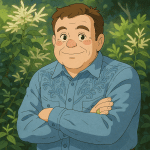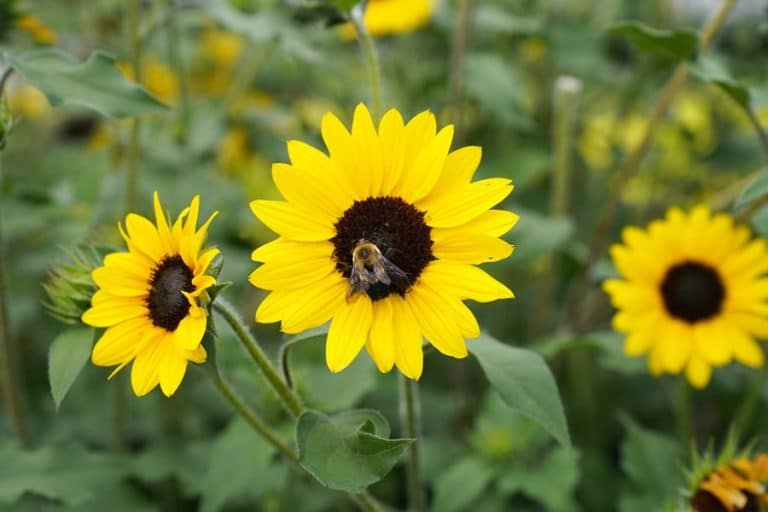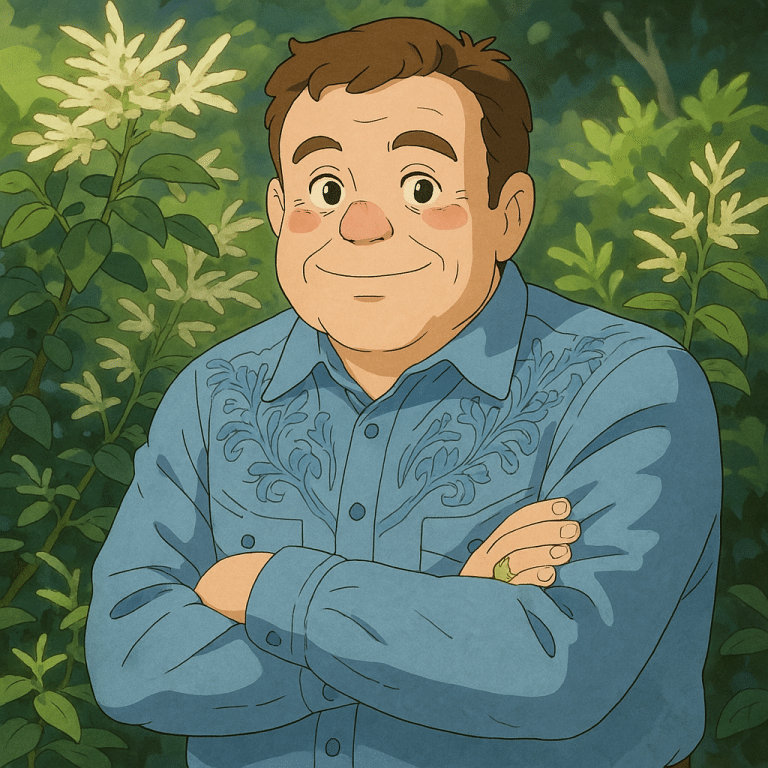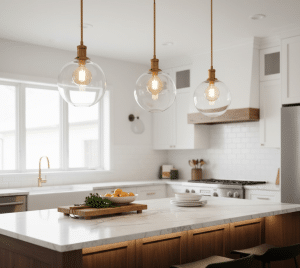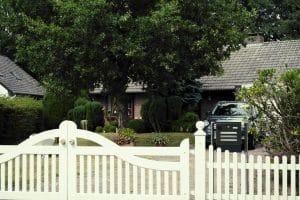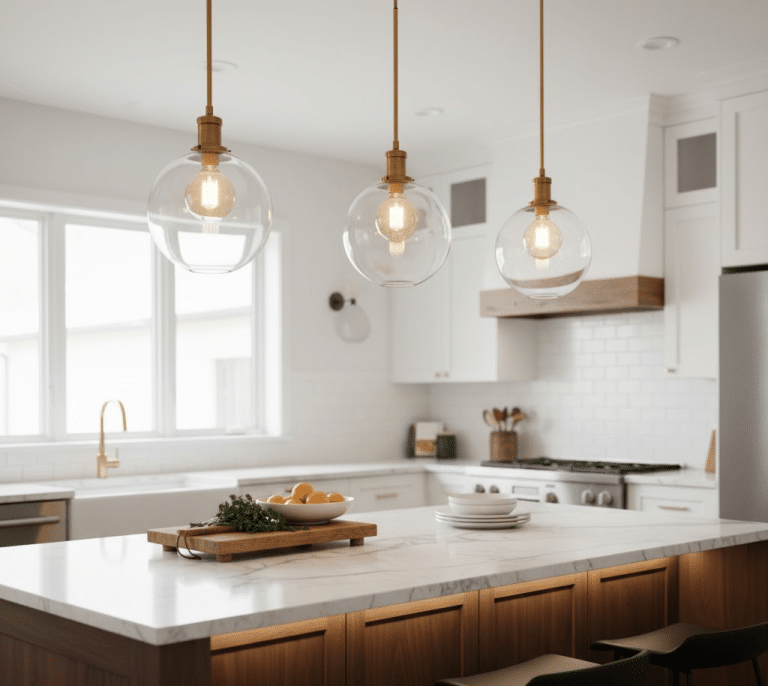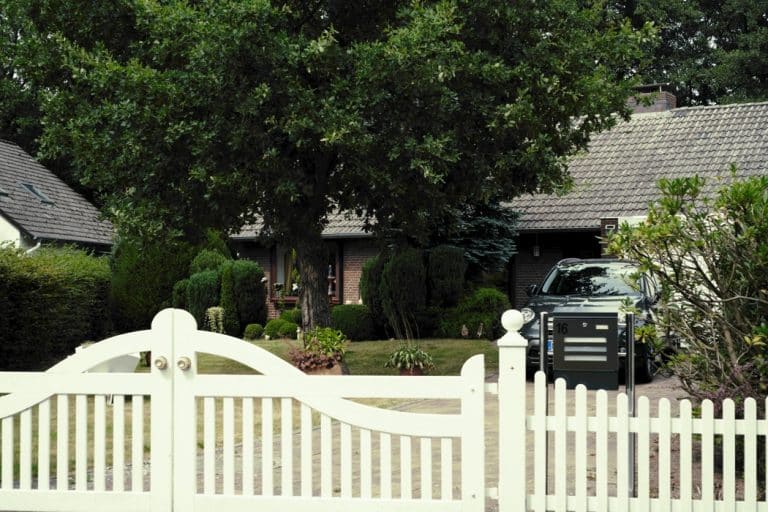As pollinators, bees are essential to our ecosystem, playing a crucial role in the growth of many fruits, vegetables, and flowers. Unfortunately, bee populations have been declining due to habitat loss, pesticide use, and climate change. Planting bee-friendly flowers in your garden is not only a way to support these vital creatures but also an opportunity to create a vibrant, lively, and colorful outdoor space. This article from My Global Flowers delves into some of the best bee-friendly flowers to incorporate into your garden, their benefits, and tips on creating a bee-attractive environment.
Why Are Bees Important?
Before we jump into the specifics of bee-friendly flowers, it’s vital to understand why they matter. Bees are responsible for pollinating approximately one-third of the food we consume, including fruits, vegetables, and nuts. They also contribute significantly to the growth of many plants that sustain other wildlife. By fostering bee populations through our gardening efforts, we are promoting biodiversity, ecosystem health, and food stability.
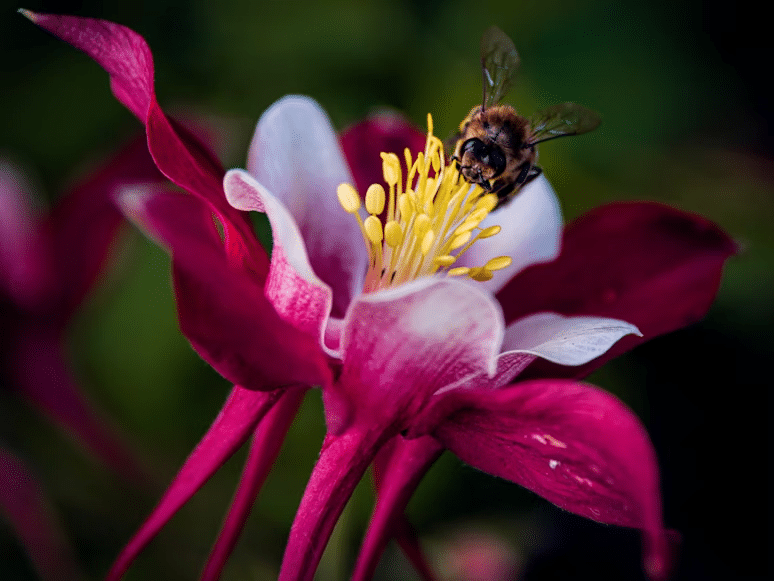
Characteristics of Bee-Friendly Flowers
When selecting flowers to attract bees, consider the following characteristics:
- Color: Bees are particularly attracted to blue, purple, and yellow flowers. These colors help denote pollen and nectar availability.
- Shape and Structure: Flowers with open shapes and flat surfaces make it easier for bees to access nectar and collect pollen.
- Blooming Seasons: A variety of flowering plants that bloom at different times can provide a continuous food source throughout the growing season.
- Native Plants: Local flora is often well-adapted to the environment and typically attracts native bee species, increasing the chances of pollination and reproduction.
Top Picks for Bee-Friendly Flowers
Here’s a closer look at some of the best bee-friendly flowers to include in your garden:
1. Lavender (Lavandula)
Description: Lavender is a well-known perennial herb, famous for its aromatic flowers that bloom in shades of purple and blue.
Benefits: Beyond attracting bees, lavender’s fragrant blossoms can repel some pests and are also excellent for use in sachets and culinary applications. Lavender can thrive in sunny spots and thrives in well-drained soil.
2. Coneflower (Echinacea)
Description: Coneflowers are hardy perennials with a striking appearance, featuring bright pink, purple, or white petals radiating from a prominent seed head.
Benefits: These flowers offer a rich source of nectar and pollen for bees. Coneflowers also provide seeds that can nourish birds during the winter months, making them a multifunctional addition to the garden.
3. Bee Balm (Monarda)
Description: This flowering plant boasts vibrant colors, including red, pink, purple, and white, and has a unique, mint-like aroma.
Benefits: Bee balm serves not just as a delicious nectar source for bees but is also attractive to hummingbirds and butterflies. It’s excellent for use in tea and adds a lovely scent to your garden.
4. Black-Eyed Susan (Rudbeckia hirta)
Description: With its bright yellow petals and dark centers, the Black-Eyed Susan is a cheerful perennial flower.
Benefits: These flowers bloom in late summer, complementing the early spring and summer blooms of other plants. They are easy to grow and can naturalize in your garden, providing robust nectar sources for bees.
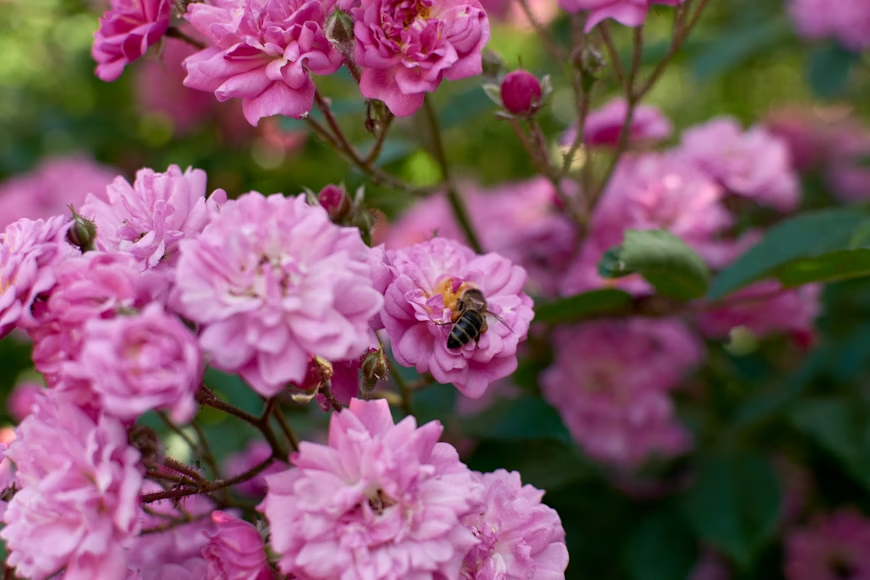
5. Sunflower (Helianthus annuus)
Description: Sunflowers are iconic for their towering height and large, bright yellow heads that follow the sun.
Benefits: These cheerful giants provide a substantial food source for both bees and other pollinators. Furthermore, their seeds can be harvested and enjoyed by both humans and birds alike.
6. Asters
Description: Planting a mix of native asters can create a diverse and vibrant habitat for bees.
Benefits: Asters bloom at various times throughout the season. They require minimal maintenance and attract various pollinators, making them an excellent choice for bee gardens.
7. Sedum (Sedum spp.)
Description: This drought-resistant succulent thrives in various climates and boasts clusters of star-shaped flowers.
Benefits: Sedum is particularly beneficial in early autumn when fewer flowers are available. Its dense foliage also provides habitat and protective cover for beneficial insects.
8. Thyme (Thymus spp.)
Description: Thyme is a culinary herb that features small purple flowers, making it both functional and aesthetically pleasing.
Benefits: When allowed to flower, thyme becomes a bee magnet. It can be used in cooking, providing flavor for your meals, while supporting vital pollinators.
Creating a Bee-Friendly Garden
Implementing bee-friendly flowers is just one facet of promoting a healthy bee population. Here are some additional tips for creating a bee-friendly garden:
- Avoid Pesticides: Many pesticides are harmful to bees. Opt for organic approaches to pest management, such as introducing beneficial insects or using insecticidal soap.
- Diversity of Plants: Plant various flowering species to attract different types of bees. Early, mid, and late-blooming plants will provide a continuous food source throughout the growing season.
- Leave Some Space Wild: Setting aside a small portion of your garden to remain untouched can create a natural habitat for bees and other beneficial insects.
- Provide Water Sources: Bees need water to survive. A shallow birdbath or puddling area in your garden can serve as an essential resource for them.
- Avoid Single-Flower Varieties: While hybrid flowers may be visually striking, many lack the nectar and pollen that bees require. Choose heirloom varieties or native plants instead.
Conclusion
By integrating these bee-friendly flowers into your garden, you’ll not only create a vibrant and dynamic outdoor space but also support vital pollinators and contribute to the overall health of our ecosystem. Every effort counts in combating the decline of our bee populations. As you plant, nurture, and watch your garden thrive, remember that you are playing an essential role in the support and preservation of these incredible creatures. Happy gardening!

